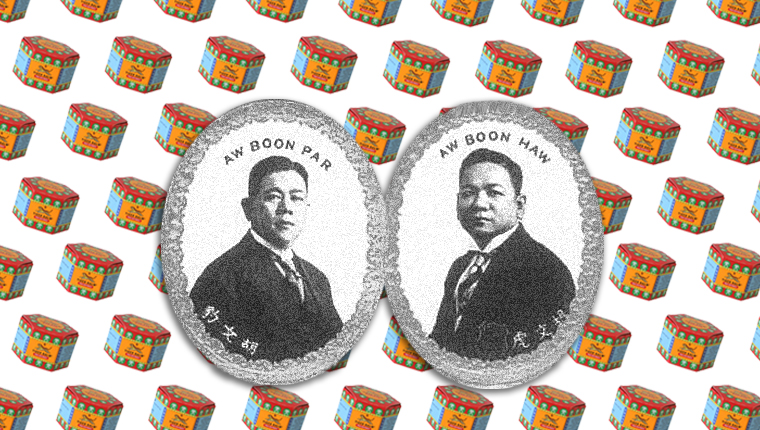In 1926, two brothers stepped onto Singapore's shores, armed with a potent ointment recipe that had already placed them among of the richest men in Burma.
Aw Boon Haw and Aw Boon Par migrated to Singapore from Rangoon, then capital of Burma. Both brothers brought their father's successful ointment business to Singapore and marketed it as a cure-all ointment for all kinds of aches and pains.
Here's how you might just be able to set up your own business empire, if you follow in their footsteps.
Have your own kick-ass name
Aw Boon Haw and Aw Boon Par were destined for greatness from the very beginning, simply by virtue of their awesome names. Boon Haw translated to "refined tiger" while Boon Par was "refined leopard". With such kick-ass names, who wouldn't go far right?
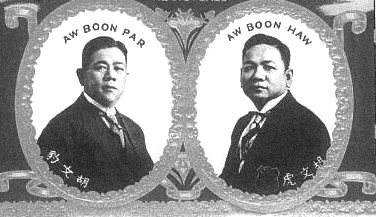 The Aw Brothers AKA the Tiger Kings.
The Aw Brothers AKA the Tiger Kings.
Make your product sound sexier
The ointment was originally created by the Aw brothers' father, Aw Chi Kim, who sold his homemade balm at his medicine hall in Burma called Eng Aun Tong. Originally named Ten Thousand Golden Oil (Ban Kim Ewe), Aw Boon Haw gave it a sexier name and re-marketed the ointment as Tiger Balm. Clearly he was taking inspiration from his own name.
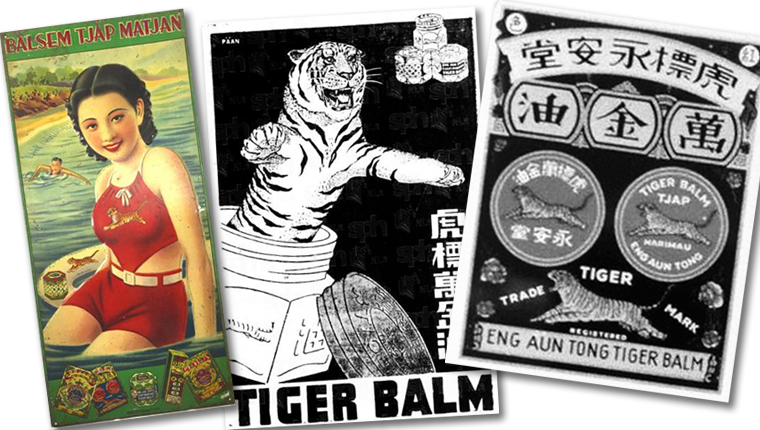 Tiger Balm ads. Taken from Pinterest and National Archives.
Tiger Balm ads. Taken from Pinterest and National Archives.
Ownself start newspapers to ownself advertise ownself
Advertising space in a newspaper can cost a bomb. If you're not willing to fork out ridiculous amounts of cash for a tiny advertisement, why not print your own paper and fill it with your own ads?
That was exactly what Aw Boon Haw did. He founded the Singapore Tiger Standard to promote his own products. The Aw family also founded the Chinese daily, Sin Chew Jit Poh. Aw Boon Haw also expanded his newspaper empire in other cities such as Penang, Amoy, Bangkok, and Hong Kong.
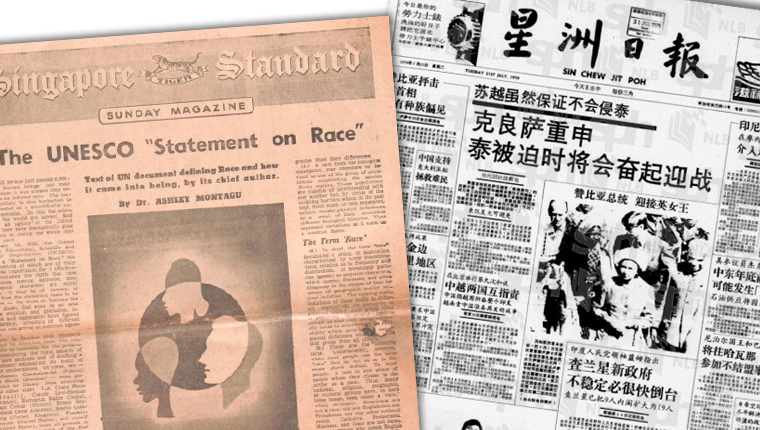 The Singapore Tiger Standard and the Sin Chew Jit Poh. Taken from Roots.sg and NewspaperSG.
The Singapore Tiger Standard and the Sin Chew Jit Poh. Taken from Roots.sg and NewspaperSG.
Open your own theme park
Walt Disney did it, so why not the brothers Aw?
The second most famous legacy of the Aw brothers, after their ubiquitous Tiger Balm, is Haw Par Villa, also known as the Tiger Balm Gardens. Think of it as Disneyland but with tales of morality designed to drive home lessons on filial piety and harmonious family relationships.
Most visitors would remember the terrifying exhibits depicting tales from Chinese mythology. Nothing is scarier than riding a boat into a dark tunnel and coming face to face with a statue of a woman getting her tongue snipped off by demons.
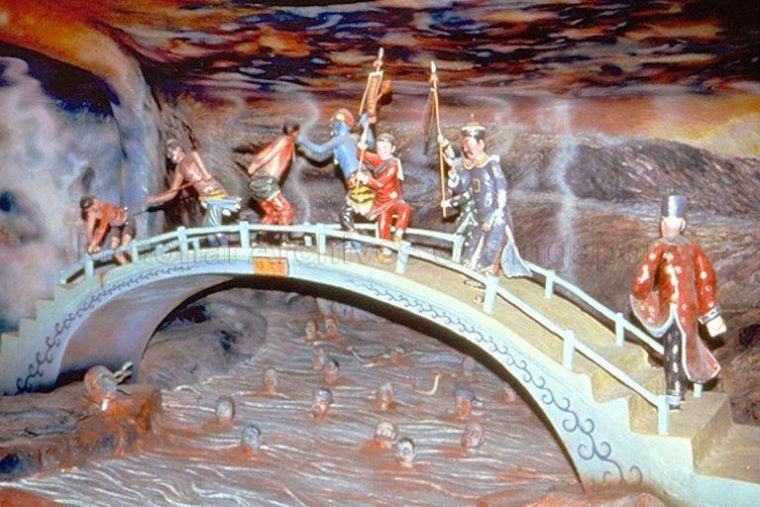 Exhibit from the Haw Par Villa's "Ten Courts of Hell". Taken from National Archives.
Exhibit from the Haw Par Villa's "Ten Courts of Hell". Taken from National Archives.
 A night club scene described as idle pastimes of the rich. Big moral no-no. Taken from National Archives.
A night club scene described as idle pastimes of the rich. Big moral no-no. Taken from National Archives.
Have your own fabulous house with flashy cars
Situated at the top of the Tiger Balm Gardens was a private villa for Aw Boon Par - a gift from his older brother Boon Haw. The architecture was dramatic. Viewed from the top, it consisted of a central dome surrounded by six other domes. Back then, the villa was considered one of the most beautiful mansions around.
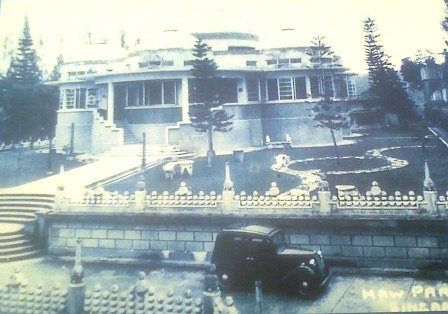 Aw Boon Par's Villa. Source.
Aw Boon Par's Villa. Source.
The villa and gardens were built on terraces on the side of a hill, which made travelling up and down quite a hassle. The Tiger Balm Kings overcame this with customised cars that should probably be called "Catmobiles".
Bruce Wayne would be proud.
The cars were emblazoned with (what else) tiger heads which had red bulbs for "eyes" - a pretty creepy sight to spot in your rearview mirror!
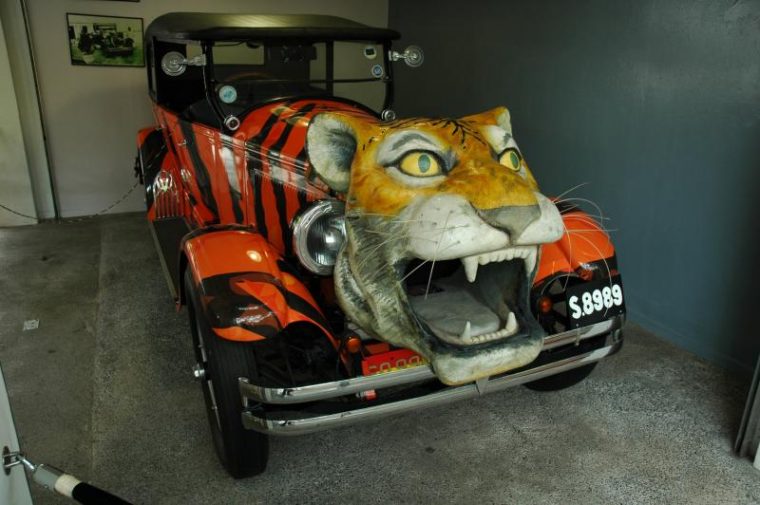 Tiger Car. Source.
Tiger Car. Source.
Beware the not-so-happy ending
Unfortunately, not all stories have a happy ending.
The Tiger Balm business went out of the Aw family's hands in 1972, when it was acquired by Slater Walker Securities of London. Aw Boon Haw's newspaper empire, under the Sing Tao group, was handed over to his daughter, Sally Aw Sian. However, a confluence of bad luck and ill-fated decisions forced Sally to sell the newspaper divisions and other family assets in 1999 to avoid bankruptcy, leading to the end of the House of Aw.
Top photo adapted from TigerBalm.com and Haw Par Corporation.
If you like what you read, follow us on Facebook and Twitter to get the latest updates.
If you like what you read, follow us on Facebook, Instagram, Twitter and Telegram to get the latest updates.
